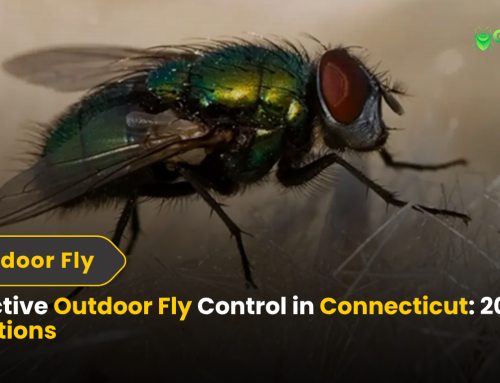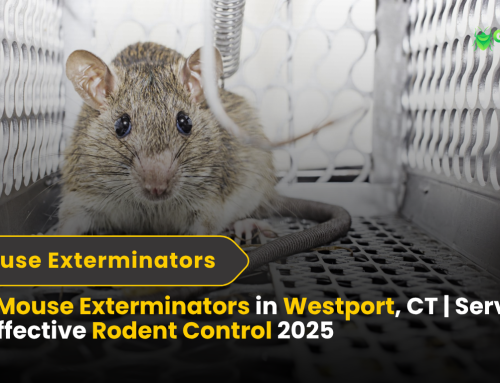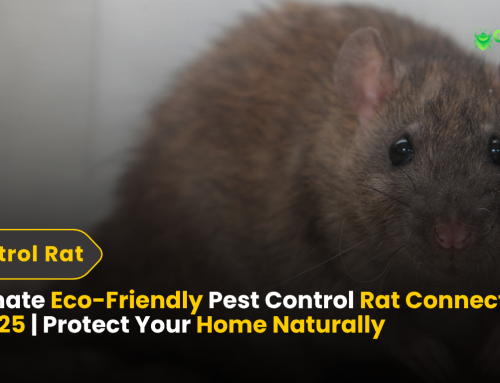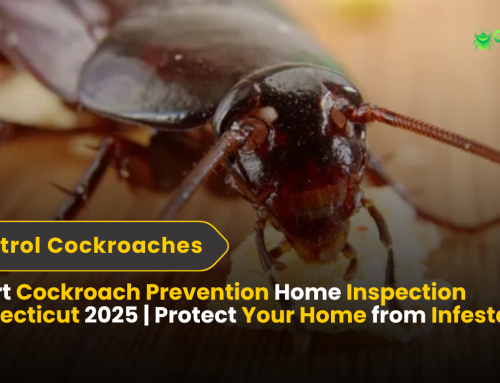Your Ultimate Guide to Finding a Reliable Rat Exterminator in CT
Discovering a rat in your home is a unsettling experience no homeowner in Connecticut should have to face. These rodents are more than just a nuisance; they are a genuine threat to your property and health. If you’re searching for a “rat exterminator in CT,” you’re likely seeking not just a service, but a solution—a partner in reclaiming your peace of mind. This comprehensive guide is designed to be your trusted resource, walking you through everything from identifying an infestation to selecting the right professional for safe and effective rat removal.
We’ll delve into the unique challenges Connecticut residents face, from the historic brownstones of Hartford to the coastal homes in New Haven. By understanding the behavior of these pests and the science behind modern extermination methods, you can make an informed decision to protect your home and family.
Understanding the Rat Problem in Connecticut
Connecticut’s diverse landscape, with its blend of dense urban centers, sprawling suburbs, and rural woodlands, creates an ideal environment for rats to thrive. The state’s distinct seasons play a significant role. As autumn turns to winter in cities like Stamford and Bridgeport, rats seek warmth and shelter, often finding their way into attics, basements, and wall voids. Similarly, the availability of food sources around restaurants and residential areas in places like Danbury and Waterbury provides a steady supply, supporting large populations.
The two most common culprits you’ll encounter are the Norway Rat and the Roof Rat.
-
Norway Rat (Sewer Rat/Brown Rat): These are larger, burrowing rodents often found in basements, crawl spaces, and ground-level areas. They are robust and excel at digging.
-
Roof Rat (Black Rat): More agile and slender, Roof Rats are excellent climbers. They prefer elevated spaces like attics, trees, and the upper stories of buildings, particularly in older neighborhoods along the CT shoreline.
Knowing which species you’re dealing with helps your rat removal expert in CT create a precise treatment strategy.
According to the Connecticut Department of Energy & Environmental Protection (DEEP), rodent infestations increase during colder months as rats seek shelter indoors.
Signs You Need Professional Rat Removal Services
Rats are notoriously secretive, often establishing a significant presence before they’re ever seen. Knowing the telltale signs of an infestation can help you act swiftly.
Auditory and Visual Clues
You might hear them before you see them. Listen for:
-
Scratching or Scampering Noises: Especially in walls, ceilings, or under floors during the night, when rats are most active.
-
Squeaking or Chirping Sounds: Vocal communication between rats, often from nests.
Visually, be on the lookout for:
-
Rat Droppings: The most common sign. These are dark, spindle-shaped, and about ½ to ¾ inch long. Fresh droppings are soft and shiny, while old ones become hard and crumbly.
-
Gnaw Marks: Rats must constantly gnaw to keep their incisors from overgrowing. Look for fresh gnaw marks on wood, wiring, plastic pipes, and even food packaging.
-
Grease Marks: As rats travel the same pathways, the oil and dirt on their fur leave dark, greasy smudges along walls and baseboards.
Structural and Environmental Evidence
Other, less obvious signs include:
-
Nesting Materials: Rats build nests from shredded paper, fabric, insulation, and other soft materials. Finding these in hidden areas is a clear indicator.
-
Footprints and Tracks: In dusty environments or mud, you may see footprints or tail drag marks.
-
Unusual Pet Behavior: Cats and dogs may become fixated on areas where rats are active, showing signs of excitement, barking, or scratching at walls.
If you notice one or more of these signs, it’s time to seriously consider professional intervention. A DIY approach often falls short, allowing the population to grow.
Why DIY Rat Control Often Fails in Connecticut Homes
It’s tempting to try and handle a rat problem on your own with store-bought traps and poisons. However, there are several reasons why this is often a temporary fix at best.
-
Incomplete Elimination: You may catch or kill a few rats, but if you don’t address the entire colony and the breeding adults, the population will quickly rebound.
-
Misidentification of Entry Points: The core of effective rat removal is exclusion—sealing up every possible entry point. Homeowners often miss subtle gaps or underestimate a rat’s ability to squeeze through a hole the size of a quarter.
-
Safety Hazards: Misplaced rodenticides can pose a severe risk to children, pets, and non-target wildlife. Furthermore, handling dead rats and their droppings can expose you to dangerous pathogens.
-
Lack of Expertise: A professional rat exterminator in CT understands rat behavior, biology, and the most effective, targeted strategies for complete eradication. They know where to look and what to look for.
Attempting DIY control can waste valuable time and money, allowing a minor issue to escalate into a full-blown infestation.
The National Pest Management Association (NPMA) emphasizes the importance of integrated pest management — combining exclusion, sanitation, and professional treatment for long-term results.
What to Expect from a Professional Rat Exterminator in CT
Hiring a professional is an investment in a permanent solution. A reputable company will follow a systematic process to ensure your home is rat-free and protected for the long term.
Step 1: The Comprehensive Inspection
A certified technician will conduct a thorough inspection of your property, both inside and out. They will identify the species of rat, locate entry points, assess the severity of the infestation, and identify attractants like food and water sources.
Step 2: The Customized Treatment Plan
Based on the inspection, the exterminator will present a tailored plan. This is not a one-size-fits-all service. The plan should clearly outline:
-
The methods to be used (trapping, baiting, exclusion).
-
The timeline for the process.
-
The products to be used and their safety profiles.
-
The total cost, with no hidden fees.
Step 3: The Execution Phase
This phase involves the actual rat removal and exclusion work.
-
Trapping and Baiting: Professionals use a variety of tamper-resistant traps and secure bait stations placed strategically out of reach of children and pets.
-
Exclusion Work: This is the most critical long-term step. The technician will seal all identified entry points using durable materials like steel wool, hardware cloth, and copper mesh, which rats cannot chew through.
-
Sanitization Recommendations: They will advise on cleaning and sanitizing contaminated areas to eliminate health risks from droppings and urine.
Step 4: Follow-up and Prevention
A trustworthy service will not just leave after the initial treatment. They will schedule follow-up visits to monitor the situation, remove dead rodents, and ensure the problem is fully resolved. They will also provide you with a detailed prevention plan.
Key Questions to Ask Before Hiring a Rat Removal Company
Not all exterminators are created equal. Protect your investment by asking potential companies these crucial questions:
-
Are you licensed and insured to operate in Connecticut? This is non-negotiable. It protects you from liability.
-
Can you provide references from local customers? A good reputation in communities like New Britain or Middletown is a strong positive indicator.
-
What is your specific experience with rat infestations? Ask about their success stories and their standard process.
-
What methods and products do you use? Ensure they prioritize safety for your family and pets.
-
Do you offer a guarantee or warranty? A company that stands behind its work is a company you can trust.
-
Is the treatment safe for children and pets? They should be able to explain their safety protocols in detail.
The Long-Term Solution: Rat-Proofing Your Connecticut Home
After professional rat removal, the goal is to ensure they never return. Here are actionable steps you can take to make your property less attractive to rats.
Exterior Maintenance Tips
-
Seal Entry Points: Conduct your own periodic inspection of your home’s exterior. Look for cracks in the foundation, gaps around utility lines, and damaged vent screens. Seal them promptly.
-
Manage Landscaping: Keep shrubbery, tree branches, and ivy trimmed back from the house. Overgrown vegetation provides shelter and a highway for rats.
-
Eliminate Outdoor Harborage: Store firewood away from the house and keep yards clean of debris.
Interior and Sanitation Practices
-
Secure Food Sources: Store food, including pet food and bird seed, in airtight metal or heavy plastic containers. Never leave pet food out overnight.
-
Manage Waste Properly: Use trash cans with tight-fitting lids, both inside and outside your home.
-
Address Moisture Issues: Fix leaky faucets and pipes, as rats need a steady water supply. Ensure crawl spaces and basements are dry and well-ventilated.
The Health and Safety Risks of a Rat Infestation
Ignoring a rat problem is not an option. The risks are real and significant.
-
Disease Transmission: Rats are known to carry and spread numerous diseases directly and indirectly, including Hantavirus, Leptospirosis, Salmonellosis, and even the Bubonic Plague.
-
Property Damage: Their constant gnawing can damage electrical wiring, creating a serious fire hazard. They also ruin insulation, drywall, and stored items.
-
Parasites: Rats often carry fleas, ticks, and mites, which can introduce secondary infestations into your home.
Frequently Asked Questions (FAQs)
Q1: How much does a professional rat exterminator in CT typically cost?
A: The cost can vary widely based on the infestation’s severity and your property’s size, but most homeowners can expect to pay between $300 and $800 for a comprehensive service, including inspection, treatment, and exclusion work. Severe or recurring infestations may cost more.
Q2: How quickly can a professional get rid of the rats?
A: While you may see a reduction in activity within a few days, complete eradication of an established colony typically takes between one to three weeks. Follow-up visits are crucial to ensure all rats, including newborns, are eliminated.
Q3: Are the chemicals and poisons used safe for my family and pets?
A: Licensed professionals use EPA-registered products and place them in tamper-resistant bait stations designed to be inaccessible to children and pets. Always discuss safety protocols directly with your chosen rat exterminator.
Q4: What’s the difference between rat removal and mouse removal?
A: The core principles are similar, but the scale and strategy differ. Rats are larger, more cautious, and cause more structural damage. Treatment plans, bait sizes, and trapping techniques are specifically calibrated for rats, which is why expertise matters.
Q5: I live in Stamford. Are rats a common problem here?
A: Yes, rat activity is prevalent in urban, suburban, and rural areas across Connecticut. Dense populations in cities like Stamford and New canaan, combined with older housing infrastructure and seasonal changes, create consistent challenges for homeowners.
Q6: Will you need to tear down my walls to get to the rats?
A: Not typically. Professionals Rat Exterminator are trained to use strategic trapping and baiting to draw rats out. In most cases, they can resolve the infestation without causing significant damage to your home. Exclusion work focuses on sealing external and easily accessible internal entry points.
Conclusion: Don’t Let Rodents Rule Your Home
A rat infestation can feel like a violation of your safe space. But as we’ve explored, it’s a manageable problem with the right knowledge and the right partner. The journey from discovery to resolution begins with recognizing the signs, understanding the limitations of DIY methods, and choosing a qualified, local rat exterminator in CT.
Your home is your most important investment. Protecting it requires a proactive and professional approach to pest control. Don’t allow a small problem to become a major crisis. Take the first step towards a rat-free home today by contacting a trusted professional who can provide a thorough inspection and a clear path to permanent rat removal. Reclaim your peace of mind and ensure the health and safety of your Connecticut household.
Recent Posts
- Commercial Pest Control Services in CT: Complete Guide for Connecticut Businesses in 2025
- Rat & Mice Exterminator in CT | Safe & Reliable Rodent Protection for 2025
- Effective Outdoor Fly Control in Connecticut: 2025 Solutions
- Top Mouse Exterminators in Westport, CT | Services for Effective Rodent Control 2025
- Ultimate Eco-Friendly Pest Control Rat Connecticut in 2025 | Protect Your Home Naturally










